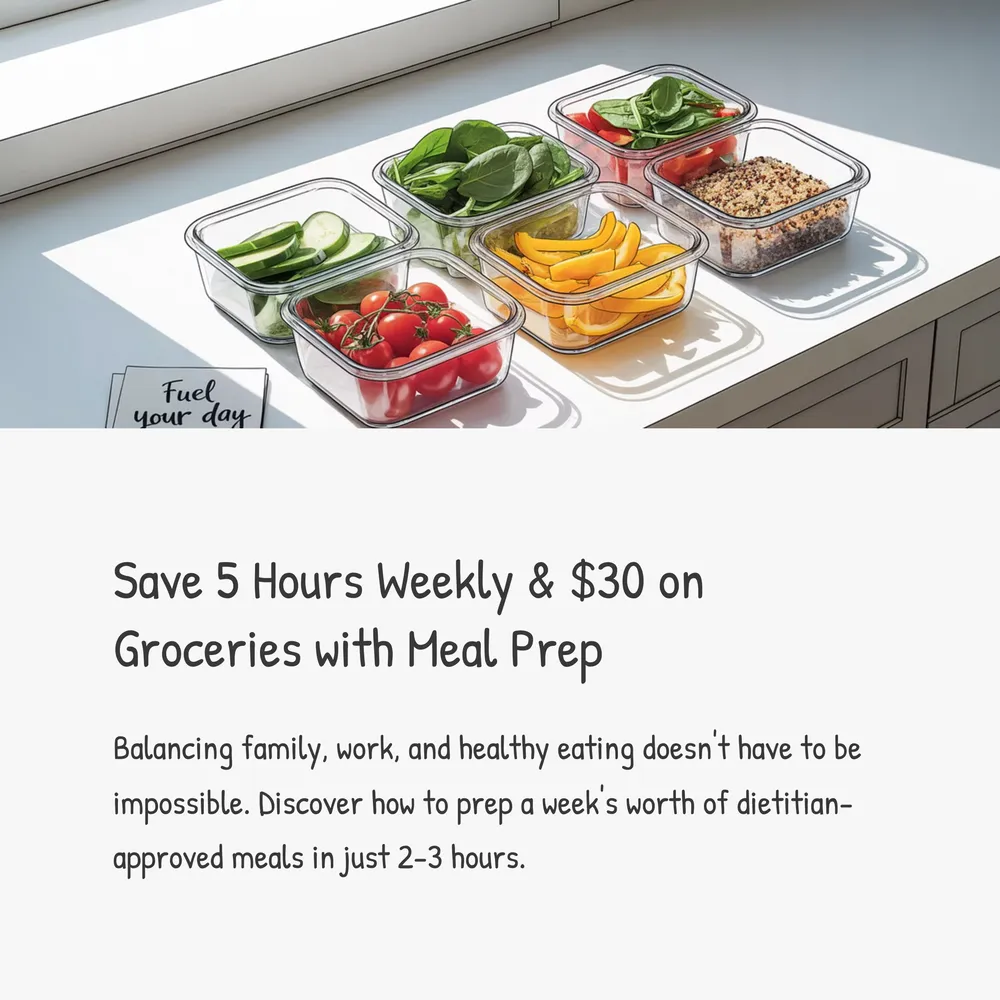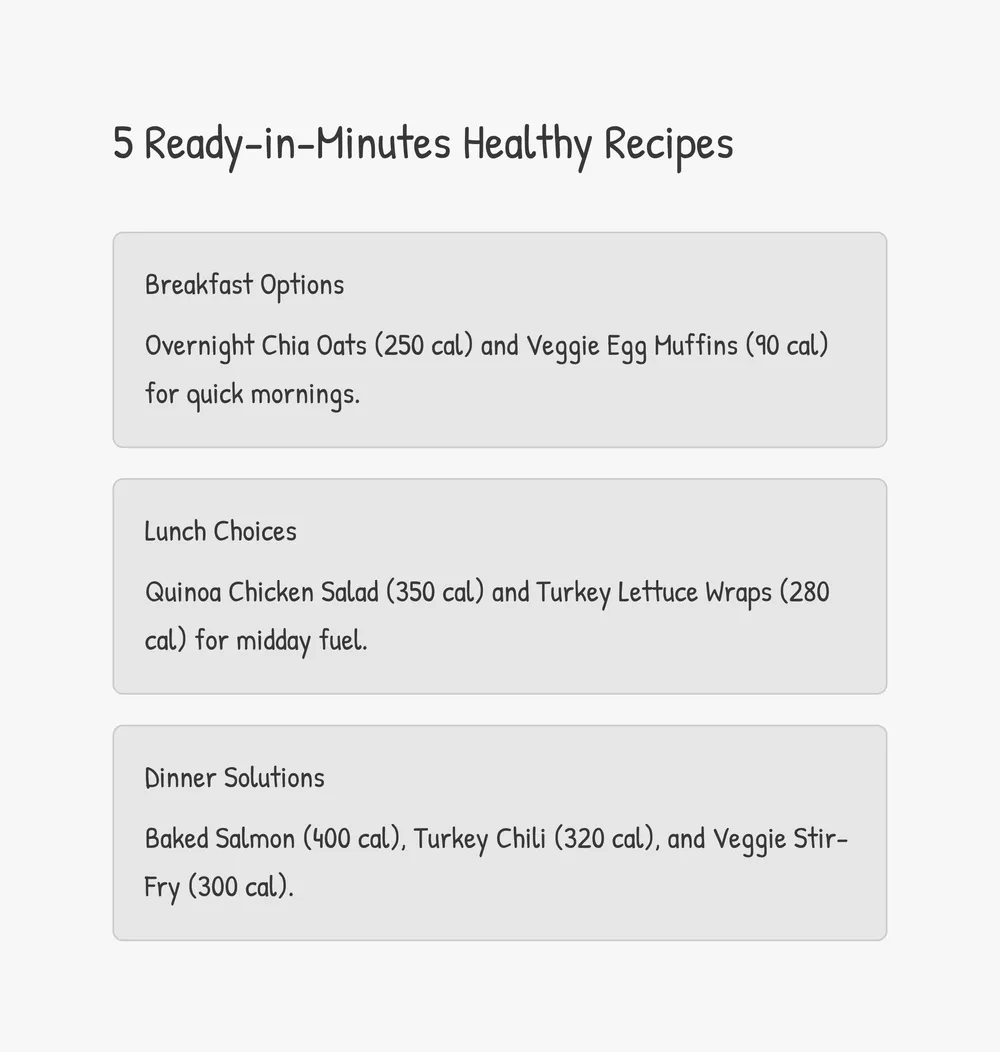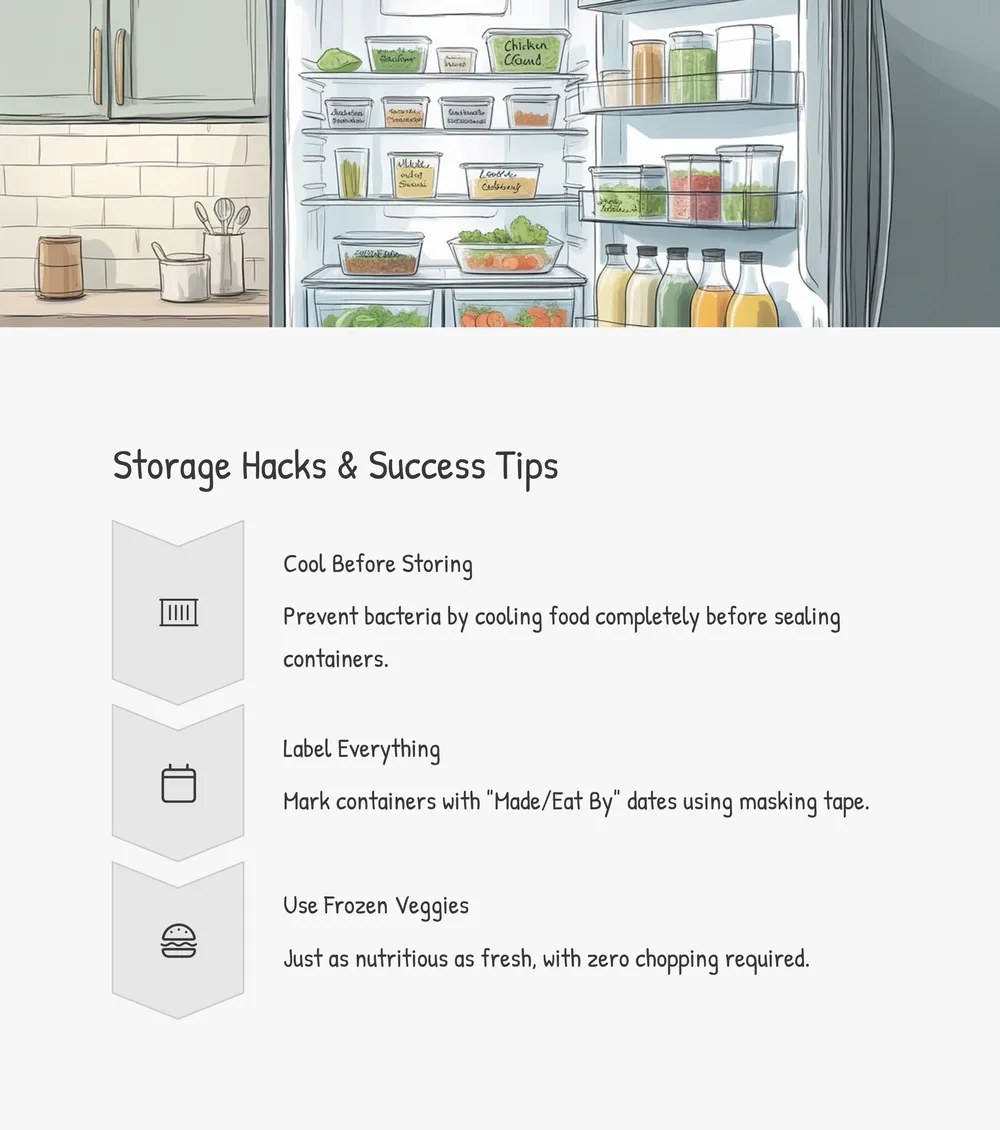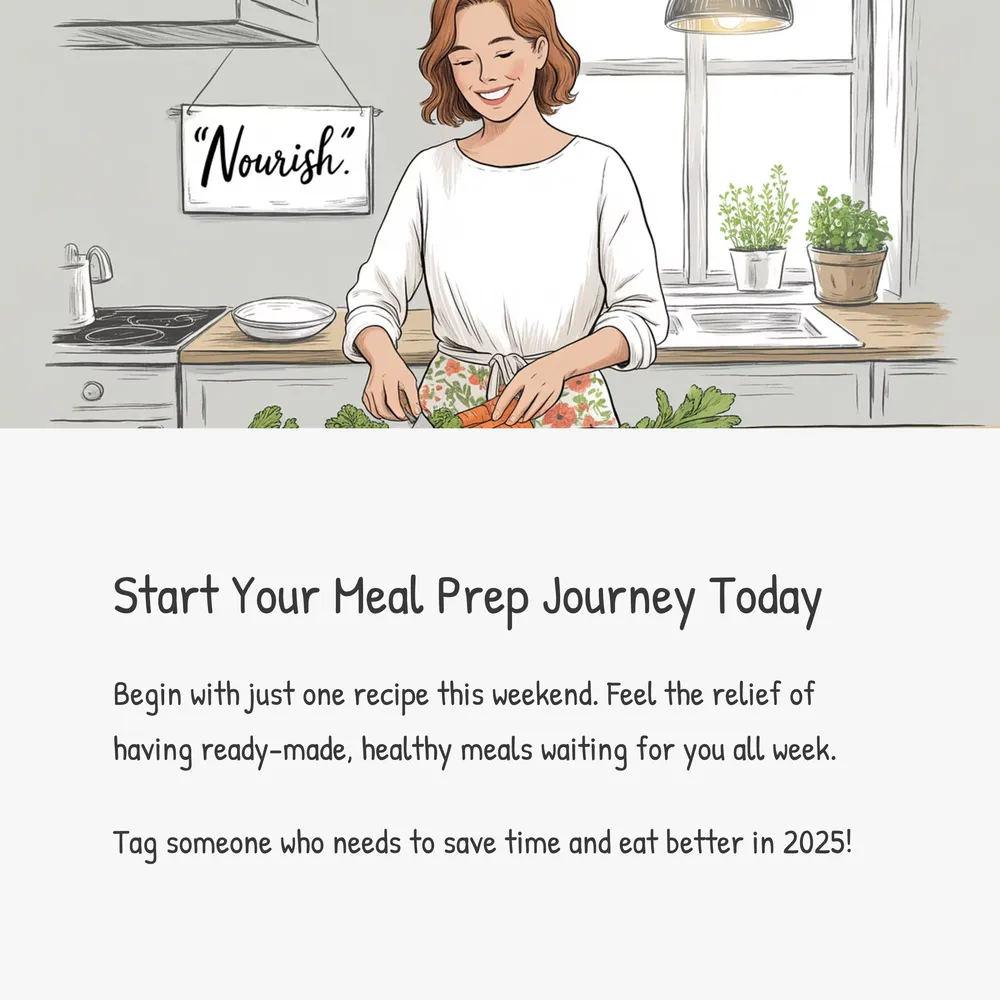Save Time and Eat Better with Meal Prep in 2025
Hey there, it’s Laura Bennett, your Portland-based nutritionist and whole food chef. If you’re like me, balancing family, work, and healthy eating often feels like juggling flaming torches. With my daughter Ellie’s busy schedule and my husband’s health needs after his cancer diagnosis, I’ve had to master meal prepping to keep us fueled without spending every evening in the kitchen. Today, I’m sharing my 2025 guide to prepping a full week of meals—think dietitian-approved recipes, clever storage tips, and time-saving hacks that have saved my sanity more than once.
Picture this: it’s Monday morning, you’re rushing out the door, and breakfast is already waiting for you. No stress, no mess. That’s the magic of meal prep. With grocery prices up 5.2% since last year (per the USDA), and schedules only getting crazier, planning ahead isn’t just nice—it’s essential. Ready to save time, cut costs, and eat healthier? Let’s get started.
Why Meal Prepping Is a Game-Changer
Meal prepping has been a quiet revolution in my home. It saves me about $30 a week on our food budget by cutting out impulse buys at Whole Foods or last-minute takeout on busy nights. More than that, it lets me control what we eat. With 50% of U.S. adults battling diet-related issues like hypertension (according to the CDC), being intentional about ingredients matters. As someone with gluten sensitivity, I know how easy it is to grab processed junk when you’re rushed. Prepping helps me avoid that trap—no late-night Chicago deep-dish pizza runs, though I’ll admit the temptation is real!
Beyond the practical, there’s an emotional payoff. After my husband’s diagnosis, every meal became a way to show care. Prepping ensures we’re nourished, even on my busiest days teaching my online course, “Everyday Superfoods for Families.” Stick with me, and I’ll show you how to make this work for your life too.

Planning Your Week Like a Pro
The secret to meal prep success? A rock-solid plan. Every Sunday, I sip my favorite rooibos tea and map out our week. Start by checking your calendar—how many meals do you need? For my family of three, I plan 21 meals (breakfast, lunch, and dinner for seven days) plus snacks, factoring in Ellie’s school lunches and my husband’s lighter dinners.
Next, choose a theme to simplify shopping. This week, I’m focusing on high-protein, gluten-free meals with plenty of veggies—think lean meats, quinoa, and seasonal finds from the Portland farmers market. Then, pick recipes for variety. I go for two breakfasts, two lunches, and three dinners to batch-cook. Finally, write a shopping list. I check my pantry first to avoid duplicates, then hit Whole Foods for staples like organic chicken ($6.99/lb) and bulk quinoa ($3.49/lb). Pro tip: Their app often has deals—I saved $5 on almond butter last week. Every penny counts with inflation biting.
Tools to Make Prepping a Breeze
You don’t need a chef’s kitchen to meal prep, but a few tools help. My go-to’s are glass Pyrex containers (3-cup size, $7.99 at Target)—microwave-safe and leak-proof. I also love my Instant Pot ($89.99 on Amazon) for slashing cooking times on grains and soups. A sharp chef’s knife and a sturdy bamboo cutting board ($24.95 at Crate & Barrel) are essentials for chopping.
Block out 2–3 hours for prepping—I do Sundays while listening to podcasts. It’s almost relaxing! Clear your counter, gather ingredients, and work in batches: chop veggies, cook proteins, then assemble. Efficiency is key. I once spent five hours prepping because I didn’t multitask—lesson learned. Got a busy weekend? Even an hour can get you ahead for a couple of days.

Five Healthy Recipes to Fuel Your Week
Let’s dive into the good stuff—recipes! Each serves four, is gluten-free (for folks like me), and keeps sodium under 2,300 mg daily per American Heart Association guidelines. They’re balanced for protein, carbs, and fats, and most importantly, they’re delicious. Here’s my lineup for the week.
Breakfast: Overnight Chia Oats & Veggie Egg Muffins
For breakfast, I alternate two options. First, Overnight Chia Oats: mix 2 cups gluten-free rolled oats ($2.99 at Whole Foods), 4 cups unsweetened almond milk ($3.49/half gallon), 4 tbsp chia seeds ($5.99/bag), and 2 tbsp maple syrup. Portion into mason jars (16-oz, $1.50 at Walmart), top with ½ cup berries per jar, and chill overnight. It’s 250 calories, 8g protein, and 180 mg sodium per serving. Ellie loves a dollop of yogurt on hers.
Second, Veggie Egg Muffins: whisk 12 eggs with ½ cup diced bell peppers, ½ cup spinach, and ¼ cup shredded cheddar. Pour into a greased muffin tin (12 cups, $9.99 at Target) and bake at 375°F for 20 minutes. Each muffin is 90 calories, 6g protein, and 120 mg sodium. Store in the fridge and reheat for 30 seconds. My husband grabs two with his coffee.
Lunch: Quinoa Chicken Salad & Turkey Lettuce Wraps
For lunch, I prep a hearty Quinoa Chicken Salad. Cook 2 cups quinoa in the Instant Pot (yields 6 cups, 25 minutes). Mix with 2 lbs grilled chicken (cubed, seasoned with Mrs. Dash salt-free blend, $4.99 at Whole Foods), 2 cups diced cucumber, 1 cup cherry tomatoes, and ¼ cup olive oil with lemon juice. At 350 calories, 30g protein, and 200 mg sodium per serving, it covers two days (8 portions).
For a lighter option, Turkey Lettuce Wraps: mix 1.5 lbs cooked ground turkey ($5.99/lb) with 1 cup shredded carrots and ½ cup diced red onion. Spoon into 12 romaine leaves (3 per serving) and drizzle with 2 tbsp gluten-free soy sauce and 1 tsp honey. Each serving is 280 calories, 25g protein, and 300 mg sodium. Store filling separately to keep them crisp.
Dinner: Salmon, Chili, and Stir-Fry
Dinners are hearty yet simple. First, Baked Salmon with Sweet Potato: season 4 salmon fillets (6 oz each, $9.99/lb at Whole Foods) with olive oil, garlic, and dill. Bake at 400°F for 12–15 minutes with 2 lbs cubed sweet potatoes. It’s 400 calories, 34g protein, and 150 mg sodium per serving. Pair with frozen broccoli ($1.99/bag) to save time.
Next, Turkey Chili: in the Instant Pot, cook 2 lbs ground turkey with 1 onion, 2 cans kidney beans (15 oz, $0.99/can), 1 can diced tomatoes (28 oz, $1.49), and 2 tbsp salt-free chili powder. Set to high pressure for 15 minutes. Yields 8 servings at 320 calories, 28g protein, and 250 mg sodium. Freeze half for later.
Lastly, Veggie Stir-Fry with Brown Rice: cook 2 cups brown rice (or use pre-cooked, $2.99/pack). Stir-fry 4 cups mixed veggies (frozen mix, $3.99) with 2 tbsp olive oil and 1 tbsp gluten-free soy sauce. Add tofu or chicken for protein. Each serving is 300 calories, 10g protein (25g with chicken), and 200 mg sodium.

Recipe Snapshot for Easy Planning
| Recipe Name | Prep Time | Servings | Calories | Protein | Sodium | Dietary Notes |
|---|---|---|---|---|---|---|
| Overnight Chia Oats | 10 min | 4 | 250 | 8g | 180 mg | Gluten-Free, Vegan |
| Veggie Egg Muffins | 30 min | 6 (2 each) | 90 | 6g | 120 mg | Gluten-Free |
| Quinoa Chicken Salad | 45 min | 8 | 350 | 30g | 200 mg | Gluten-Free |
| Turkey Lettuce Wraps | 30 min | 4 | 280 | 25g | 300 mg | Gluten-Free, Low-Carb |
| Baked Salmon & Sweet Potato | 40 min | 4 | 400 | 34g | 150 mg | Gluten-Free |
| Turkey Chili | 30 min | 8 | 320 | 28g | 250 mg | Gluten-Free |
| Veggie Stir-Fry & Rice | 35 min | 4 | 300 | 10g | 200 mg | Gluten-Free, Vegan Opt. |
Storage Hacks to Keep It Fresh
Storage can make or break your meal prep. I learned this when a batch of quinoa turned to mush by midweek. Now, I cool everything completely before sealing—hot food traps steam and breeds bacteria, per USDA food safety guidelines. Spread items on baking sheets for 20 minutes to speed it up.
Use airtight containers like my Pyrex set with silicone lids. For salads, keep dressings separate in small jars ($0.99 at Dollar Tree) to avoid sogginess. Label with dates—“Made 1/5/25, Eat by 1/8/25”—using masking tape. Most meals last 3–5 days in the fridge; freeze extras like chili in single portions with freezer bags ($2.99/pack).

Top 6 Tips for Meal Prep Success
- Double Up Smartly – Make extra quinoa or rice to repurpose into bowls or sides later. It’s a time-saver.
- Go Frozen – Frozen veggies are as nutritious as fresh (per NIH studies) and skip the chopping. Grab mixes for stir-fries.
- Get a Gadget – An Instant Pot or slow cooker cuts hours off stews. Look for sales—I snagged mine on Black Friday.
- Prep Snacks – Slice fruits or portion nuts into baggies. Apple slices with peanut butter are Ellie’s go-to.
- Mix Up Flavors – Rotate proteins (chicken, turkey, tofu) and herbs (basil, cilantro) so meals stay exciting.
- Track If You Need To – Use MyFitnessPal (free app) to log meals. Set a 2,000 mg sodium cap via Settings → Nutrition.
Navigating Meal Prep Challenges
Things can go awry, even with a plan. Short on time? Focus on one-pot meals like Turkey Chili—less cleanup, big payoff. Meals feeling repetitive? Add a new spice midweek; I keep sriracha ($3.49 at Whole Foods) for a kick. Worried about safety? The USDA says refrigerate perishables within two hours—don’t let chicken sit out while bingeing Black Mirror’s “Nosedive,” where obsession with perfection mirrors our kitchen struggles sometimes.
I’ve had containers leak in my Subaru Outback during a picnic—total mess. Now, I double-check lids and use a cooler bag ($9.99 at Target). Picky eaters at home? Involve them. Ellie picks one recipe weekly, and it’s boosted her buy-in big time.
Why This Matters to Me—and Will to You
Meal prepping isn’t just about food; it’s about care. Post-diagnosis, every bite mattered more for my husband. Cutting processed junk and controlling portions boosted our energy—Ellie’s sharper at school, and his checkups show better numbers. Hearing Ellie cheer about her scholarship over a prepped dinner at our oak table? Pure joy. I bet you’ll feel that same warmth when your family gathers over meals you’ve planned with love.
Looking ahead, I’m excited to explore more health tools with you. My next post will cover the top five free nutrition apps for 2025, like MyFitnessPal, to track your diet effortlessly. If prepping is step one, tracking is step two for real change. Stay tuned!

Frequently Asked Questions (FAQs)
- How long do prepped meals stay fresh in the fridge? Most last 3–5 days in airtight containers at or below 40°F, per USDA guidelines. Cool fully before sealing to avoid bacteria.
- Can I freeze meal-prepped food? Yes! Freeze soups or chili in portion-sized bags for up to 3 months. Thaw overnight in the fridge before reheating.
- What if I don’t have 2–3 hours to prep? Start small—prep 2–3 meals or one-pot dishes. Even 30 minutes of chopping saves time later.
- How do I keep salads from getting soggy? Store dressings and wet ingredients separately. Use sturdy greens like kale or romaine for lasting crunch.
Let’s Get Cooking—Together!
I hope this guide sparks inspiration to carve out a few hours this weekend for prepping. Start with one recipe—maybe the Overnight Chia Oats—and feel the relief of a ready breakfast. Got a meal prep hack or fave recipe? Share it in the comments—I’m all ears! And don’t miss my upcoming post on the best free nutrition apps to supercharge your routine. Ready to save time and eat healthier in 2025? Let’s do this!